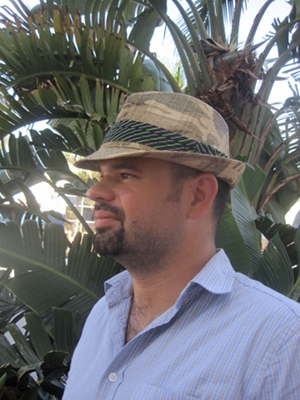Zsolt Talata
A micrograph of the axisymmetric flow-focusing nozzle during emulsion generation.Image courtesy of the University of Kansas
Faculty mentor: Zsolt Talata, associate professor of mathematics. John (Jack) Johnston, senior in mathematics, economics and physics, Overland Park: “Initial-Boundary Value Problems for the Serre System,” a project on the unified transform method to analyze the linear component of the Serre system of water waves. Zsolt Talata's 19 research works with 405 citations and 474 reads, including: Context Block Estimation for Random Fields. University of Kansas, Mathematics CANCEL. Rating Do's and Don'ts View all Guidelines. Double check your comments before posting. Course codes must. Contact information: Zsolt Talata. School of Mathematics Georgia Institute of Technology. 686 Cherry Street, N.W.
LAWRENCE — A research lab at the University of Kansas School of Engineering and School of Pharmacy is analyzing the genetics of human immune responses to develop the basis of an effective vaccine or drug therapy against Epstein-Barr Virus, or EBV, the pathogen that causes mono and infects around 90 percent of adults worldwide.
The virus, which commonly spreads during teen years and young adulthood via kissing, has hit-or-miss health consequences. In some people, EBV causes infectious mononucleosis and can induce cancers like gastric carcinoma or nasopharyngeal carcinoma in later years—while in others the virus is successfully suppressed by the immune system. No EBV vaccine has been approved by the FDA, and the mechanisms of immune protection from EBV-associated diseases are still unclear.
“We are applying recently developed technologies to address an age-old problem,” said Brandon DeKosky, assistant professor of chemical and petroleum engineering and pharmaceutical chemistry at KU, who is leading the effort. “Why do some people infected with Epstein-Barr Virus have a terrible time and get infectious mononucleosis for months, while others are completely asymptomatic and don’t even know they have the virus?”

MOPC-21 immortalized B cells encapsulated in emulsion droplets. The outer aqueous stream that normally contains cell lysis buffer (Fig. 1a, gray solution) was replaced with 0.4% Trypan blue in PBS to examine cell viability throughout the flow focusing and emulsification process. Emulsified cell viability was approximately 90% and cell viability did not differ substantially from non-emulsified controls.Image courtesy of the University of KansasWith a recent $1.8 million, five-year grant from the National Institutes of Health, DeKosky’s lab is using high-throughput techniques to analyze the behavior of B cells in the body. A vital part of our immune system, B cells are white blood cells specialized to bind to specific antigens, such as EBV, and produce antibodies that neutralize foreign agents.
“Each of us has around 100 billion B cells, and each one is playing its own unique role in protecting us from disease,” DeKosky ?said. “My lab looks at single B cells en masse to figure out which one is doing what—and we try to use that molecular-scale information to address larger questions of why one person is protected, why another person might feel sick, and what’s happening with the immune system in both situations.”
The KU researcher first isolates B cells that are reactive to EBV, which is a complicated task due to the sheer numbers of cells involved. DeKosky’s team has honed an innovation that mixes millions of B cells into an emulsion to pinpoint those tailored to fight EBV.
“Instead of taking single B cells and putting one per tube, which is the traditional and more time-consuming method, we put cells into emulsion droplets, which are droplets of water separated from each other by oil—just like salad dressing,” DeKosky said. “Imagine you have a million B cells isolated from a patient, and if you put them in shaken-up salad dressing you now have a million cells isolated into their own individual compartments. Then we take genetic material from each of those single cells in each of those droplets—you can call them micro-reactors. Just one person in one afternoon can screen millions of B cells at the single-cell level using this technology.”
The project will track “longitudinal samples” of B cells, meaning they follow participants’ immune systems over time to see differences across different people, and they also study how a person’s immune system changes as they progress from initial acute infection to long-term immune suppression of the virus.
“This class of viruses infects people for life, so it has an initial infectious stage and eventually goes latent but can reactivate in some cases, for example if a person is ever immunocompromised like after a transplant or similar settings,” DeKosky said.
DeKosky’s lab collaborates with Dr. Henry Balfour, Jr. at the University of Minnesota, who has performed large-scale studies drawing blood samples from college-age students undergoing primary EBV infection. This unique sample set allows project researchers to study the role of B cells and how it corresponds to the severity of disease, ranging from asymptomatic primary infection in some cases, to others where a study patient was bedridden or even hospitalized with severe mono.

Once B cells reactive to EBV are isolated, DeKosky’s lab subjects them to DNA sequencing to grasp why some patients are protected from diseases triggered by EBV while others suffer from health issues. A genetic blueprint of the critical features of B cells that defend against EBV is anticipated and could lead the way toward new strategies to combat the virus.
“We’re trying to reverse engineer the body’s own defenses,” DeKosky said. “If we identify antibody signals in patients that are really promising, that could give us the critical molecular clues needed to develop targeted vaccines or therapies.”
Other research partners at KU include David Davido, Luke Huan, and Zsolt Talata. Several collaborators at the National Institutes of Health are involved in the work as well.
The researchers anticipate the technological approach used here to better understand immune protection from EBV soon will be applied to a host of other ailments.
“We started with EBV because we have this really fantastic sample set where we can look for differences in molecular features of patient immunity matched with their clinical outcomes,” said DeKosky. “We are using this first project to develop the workflow that can be applied not just to EBV but to many other human diseases.”
LAWRENCE — Four undergraduate mathematics majors at the University of Kansas are the first recipients of the Department of Mathematics Undergraduate Research Awards in Mathematics (MathUGRA). The students will receive $1,000 to support their respective research projects.
These awards are patterned after the university’s undergraduate research awards and are meant to support math majors pursuing original research under the guidance of a KU math faculty member. MathUGRAs are awarded to students conducting semester-long independent projects. The students must be enrolled full-time during the award period.
Zsolt Talata Ni
Recipients were selected on the merit of the applicant's proposal, the applicant's academic record and the recommendation of the faculty member who will serve as the recipient’s mentor. One student received an award for the fall 2019 semester, and three will conduct their projects in spring 2020.
These awards are made possible by generous donations from alumni and friends through KU Endowment.
Zsolt Talata Sa
Zachary Atkins, senior in mathematics and computer science, Lansing: “Towards Optimality of Domain Decomposition Methods for Eigenvalue Problems,” a research project to explore the ways for breaking a large problem into many subproblems which can be solved independently with the solutions combined to reconstruct a global solution. Faculty mentor: Agnieszka Miedlar, assistant professor of mathematics.

Yuan Feng, senior in mathematics and chemistry, Hebei, China: “The Application of Variable Length Markov Chain (VLMC) Model and Probabilistic Suffix Tree (PST) Model on Unemployment Rate Prediction and Categorization Genes,” a project that takes two approaches — a social science project to utilize the VLMC method to predict the future unemployment rates based on the unemployment history, and a biological science project to apply the probability suffix trees on the genes to categorize the genes into groups. Faculty mentor: Zsolt Talata, associate professor of mathematics.
John (Jack) Johnston, senior in mathematics, economics and physics, Overland Park: “Initial-Boundary Value Problems for the Serre System,” a project on the unified transform method to analyze the linear component of the Serre system of water waves. Faculty mentor: Dionyssis Mantzavinos, assistant professor of mathematics.
Sagindyk Urazayev, sophomore in mathematics and computer science, Almaty, Kazakhstan: “Machine Learning in Data Assimilation Applications,” a research project to apply machine learning techniques to improve data assimilation procedures. Faculty mentor: Erik Van Vleck, professor of mathematics.